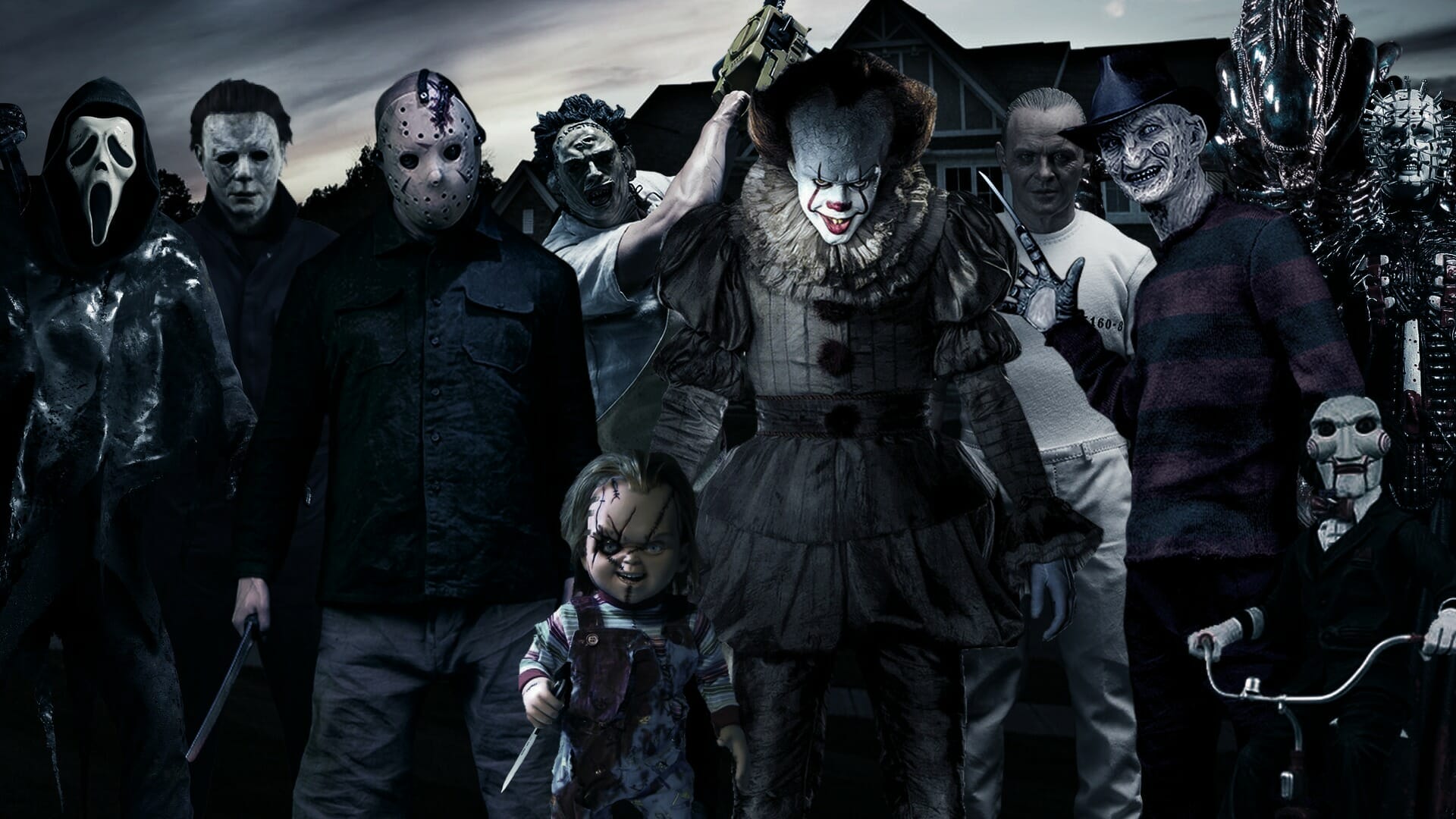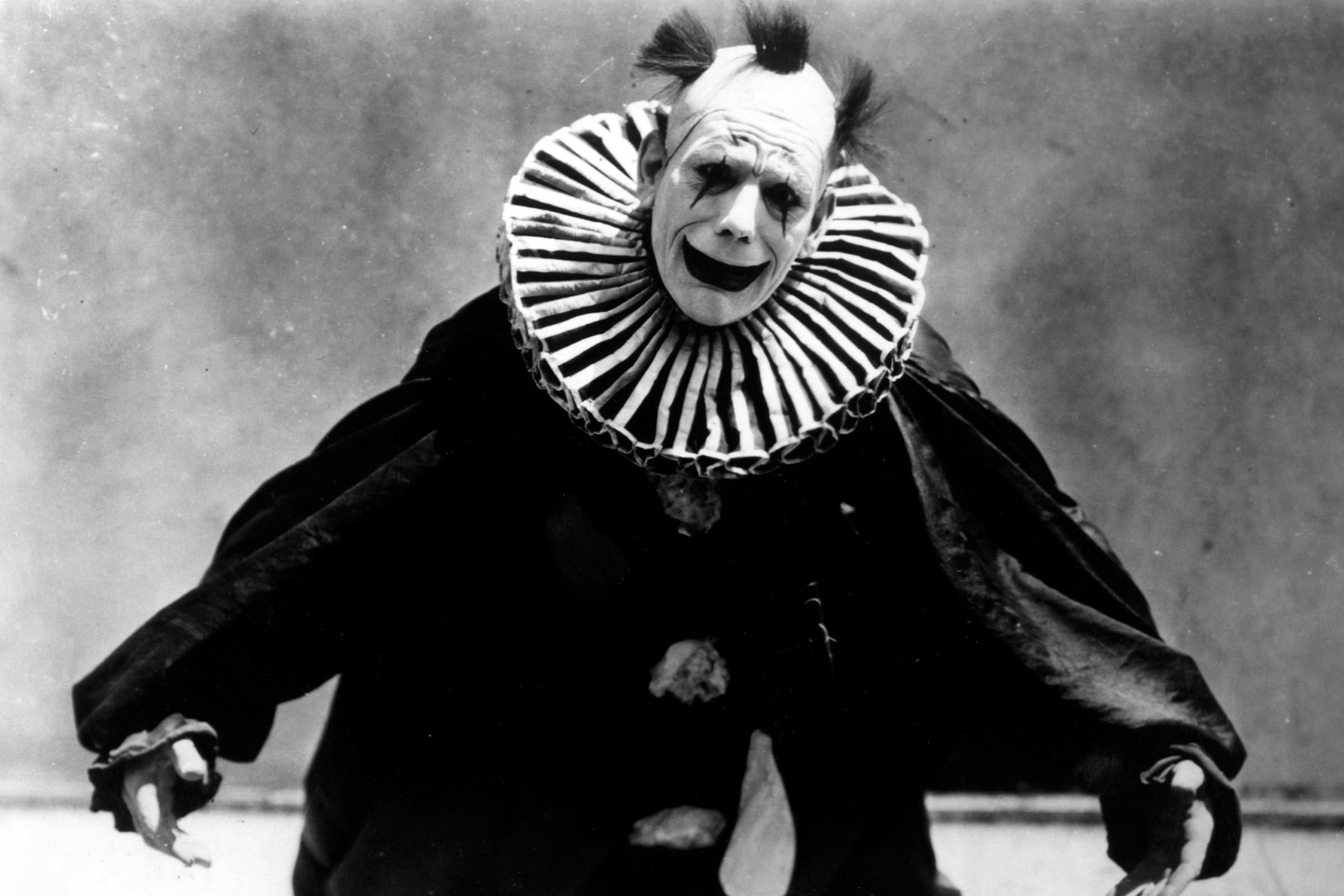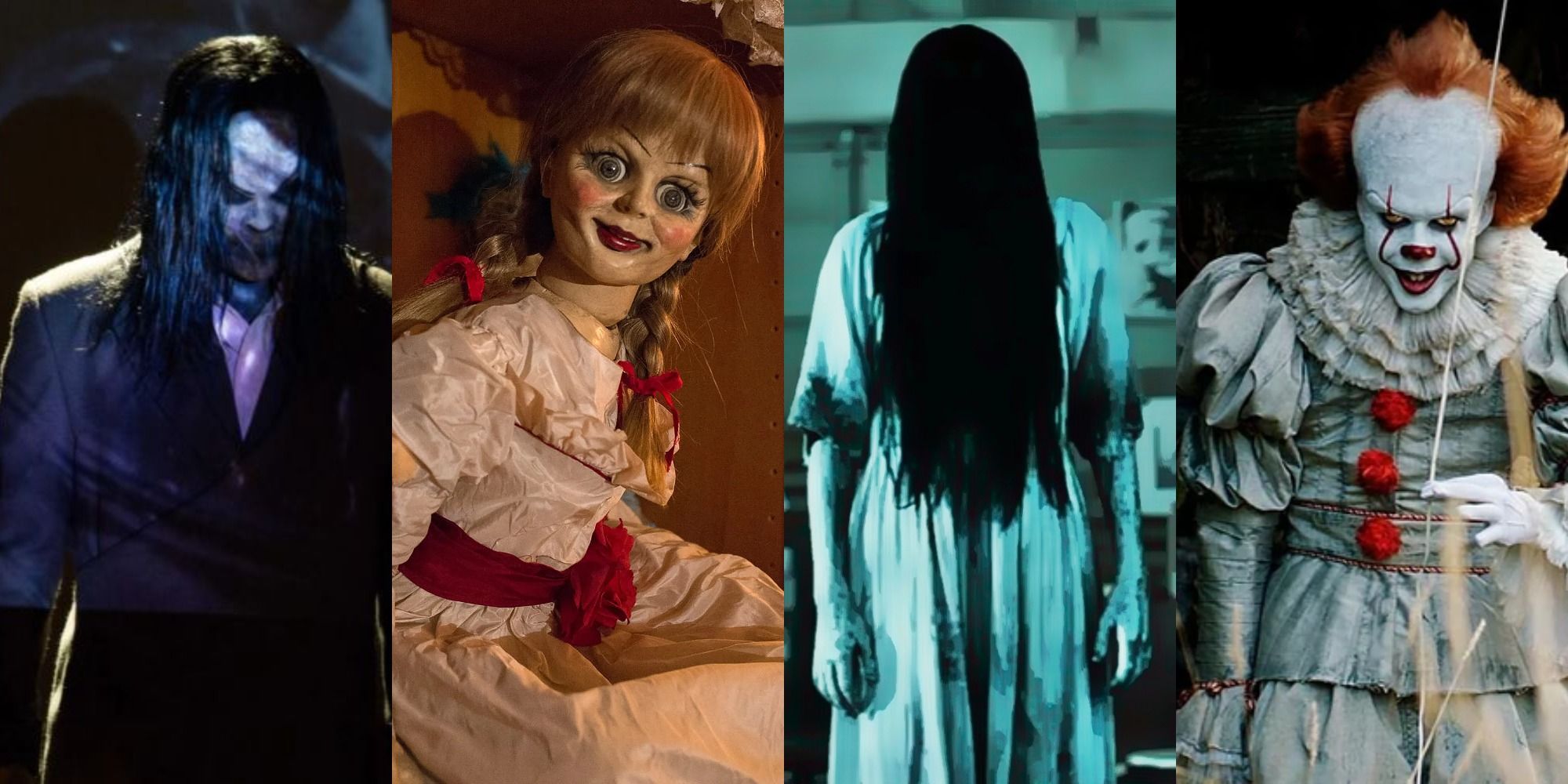There is something about the unknown, a certain chill that creeps up your spine when you think about what might be on the other end of a connection. We often reach out to numbers for practical things, to get help with our email, to sort out account questions, or to find out about technical details for our online services. You know, like when you need to sort out your mail settings or figure out why something might not be working right with your browser. But what if the numbers we think about, or the very idea of a number, could bring about a different kind of feeling, one that sends shivers through you?
It's interesting, really, how our minds connect concepts. We have those everyday phone numbers we might call for support, perhaps to ask about getting mail, or to manage our account, even to get assistance with a password or a username. You want answers to your questions, and you expect a helpful voice. However, there is another kind of "number" that exists, one that lives in the shadows of our imagination, sparking a sense of unease. This isn't about dial tones or customer service lines; this is about the profound, unsettling feeling that certain ideas or experiences can conjure, a feeling very much like facing something truly frightening, almost as if you were to call a "scariest number to call."
This feeling, a bit like a primal dread, is often what the very best fright films aim to create. They take us to places where the familiar becomes strange, where the things we thought were safe turn out to be anything but. So, while we might typically think of contacting customer care by email, chat, or even a phone number for practical help, we're going to consider a different kind of "call" today – the kind that makes your heart race and your breath catch. It's about those moments that make you wonder what eerie presence might be on the other side of a connection, whether it's a number on a screen, a date in history, or a ranking on a list of truly terrifying things. We will explore what makes these "scariest numbers to call" so impactful, in a way.
Table of Contents
- What Makes Us Feel a Chill from Scariest Numbers to Call?
- The Power of Storytelling and Scariest Numbers to Call
- How Do We Measure the Fear from Scariest Numbers to Call?
- From the Classics to New Frights - The Scariest Numbers to Call
- Why Do We Seek Out the Scariest Numbers to Call?
- The Enduring Legacy of Scariest Numbers to Call
- A Look at the Different Flavors of Scariest Numbers to Call
- The Impact of Scariest Numbers to Call on Our Minds
What Makes Us Feel a Chill from Scariest Numbers to Call?
What is it, really, that sends a shiver down our backs when we think about something truly unsettling? It's not just the sudden jump or the startling image. Often, the real dread comes from what we don't see, the things that are hinted at, or the slow build of tension. Think about those films that stay with you long after the credits roll. They create a feeling of unease that sticks around, a bit like a lingering echo. This feeling is very much akin to the idea of "scariest numbers to call." It's not a literal phone number, but rather a concept, a date, a ranking, or an image that triggers a deep-seated fear. The way a film can make you feel vulnerable, or make you question what's real, that's where the genuine fright comes from, you know.
Consider the way some stories unfold, slowly revealing something sinister. It's the anticipation, the waiting for something terrible to happen, that truly gets to us. When we watch a film like the one based on Stephen King's well-known book, "It," the fear isn't just about a creature; it's about the feeling of childhood innocence being threatened, about things lurking in the shadows. This kind of fear is a psychological one, playing on our deepest anxieties. It's that feeling of knowing something bad is coming, a bit like seeing a number on a screen that you know means trouble, even if you can't quite put your finger on why. That, in a way, is the essence of "scariest numbers to call" in the context of our minds.
The power of suggestion plays a huge part, too. A creaking floorboard, a distant whisper, a shadow moving just at the edge of your vision – these small details can be far more unsettling than any outright monster. They force our minds to fill in the blanks, and what our minds create is often far more terrifying than anything a filmmaker could show us directly. This subtle approach is what makes some of the greatest fright films so effective, and it’s what makes the idea of "scariest numbers to call" so compelling. It's the unknown that truly frightens us, the thought of what might happen if we were to connect with something truly dreadful, in some respects.
The Power of Storytelling and Scariest Numbers to Call
Stories have a remarkable ability to transport us, to make us feel things that aren't real, but feel incredibly real in the moment. When we sit down to watch a film, we are inviting ourselves into a new experience, one where the rules of our everyday world might not apply. This is especially true for fright films. They take us to places where demonic possessions are a possibility, where cursed televisions can bring about misfortune, or where hotels might hold dark secrets. The narrative structure, the way the plot unfolds, is what draws us in and keeps us on the edge of our seats, you know.
The characters in these stories often face situations that are beyond their control, and we, as viewers, feel that helplessness with them. Whether it's a family dealing with an unseen presence or someone trying to escape a killer clown, the personal struggles of the characters make the fear more relatable. This connection makes the "scariest numbers to call" feel more personal, more immediate. It's not just a scary concept; it's something that could, in our minds, happen to someone we care about, or even to us. The emotional weight of these stories is what gives them their lasting impact, really.
Think about the way certain films use sound, or the absence of it, to create a feeling of dread. A sudden silence can be just as terrifying as a loud scream. The music, or the lack of it, guides our emotions, telling us when to be afraid, when to brace ourselves for what's coming. This careful crafting of the experience is what separates a truly frightening film from one that's merely startling. It’s the artistry that turns a simple idea into something that resonates deeply, making the "scariest numbers to call" feel like a genuine threat, or a genuine source of unease, in a way.
How Do We Measure the Fear from Scariest Numbers to Call?
It might seem odd to talk about measuring fear, but people have actually tried to do just that. There are studies that look at how our bodies react when we're watching something frightening. They might track things like heart rate readings, seeing how quickly our hearts beat when a particularly tense scene comes on. This kind of observation gives us a bit of a scientific peek into what truly scares us, or what makes us jump. It's a way to put a kind of "number" on the impact of these experiences, you know, a sort of measurable "scariest numbers to call" in terms of physical response.
When researchers look at these physical responses, they can often pinpoint which films, or even which moments within films, are the most effective at eliciting a strong reaction. It's not just about how loud the jump scare is; it's about the sustained feeling of tension that makes your heart pound. A film that keeps your heart rate elevated for a long period, rather than just spiking it briefly, is often considered more genuinely terrifying. This suggests that the psychological build-up is more impactful than sudden shocks, which is interesting, really.
This scientific approach helps us understand that fear is a very real, physical experience. It's not just in our heads. Our bodies react to the perceived threat, even if we know it's just a story on a screen. So, when we talk about the "scariest numbers to call," we're also talking about the measurable impact these stories have on us, the way they make our very physiology respond. It's a testament to the power of these tales to get under our skin, to truly affect us, basically.
From the Classics to New Frights - The Scariest Numbers to Call
The world of fright films is vast and ever-growing, with new entries appearing all the time. But there are certain films that have stood the test of time, becoming true classics that continue to terrify generations. Think about "The Exorcist," a film that still holds a powerful grip on audiences decades after its release. These are the "scariest numbers to call" that represent milestones in the genre, films that set the standard for what true terror could be. They often explore deep, unsettling themes that resonate with people, regardless of when they were made, you know.
In more recent times, we've seen a resurgence of inventive and truly unsettling films. The year 2025, for example, has already brought us some exciting new frights, from "Companion" to "Heart Eyes." These newer films often push boundaries, exploring new ways to scare us, whether through grisly slasher flicks, eerie ghost stories, or creature features that make us question what's possible. They represent the current generation of "scariest numbers to call," showing that the genre is always finding fresh ways to tap into our fears, in a way.
What's fascinating is how different films achieve their scares. Some rely on psychological freakouts, twisting our minds and making us question reality. Others lean into practical effects and gruesome visuals. Then there are the ghost stories, which play on our belief in the supernatural, or killer clown tales that exploit a common childhood fear. This variety means there's a "scariest number to call" for almost everyone, a type of fright that will resonate with your particular sensitivities. It's really about finding what genuinely unnerves you, and there are many options, as a matter of fact.
Why Do We Seek Out the Scariest Numbers to Call?
It seems a bit strange, doesn't it, that we actively seek out experiences that are designed to make us feel afraid? We draw our curtains, settle in, and prepare ourselves for a list of films sure to keep us up at night. Why do we do this? Part of it might be the thrill, the rush of adrenaline that comes with facing something terrifying from a safe distance. It's a controlled way to experience extreme emotions, without any actual danger. This pursuit of the "scariest numbers to call" is a curious human tendency, in some respects.
For many, it's also a way to process fear in a healthy manner. By confronting fictional monsters and terrifying situations, we can explore our own anxieties and fears in a safe environment. It can be a cathartic experience, allowing us to release tension and feel a sense of relief when the story concludes. It's like a mental workout, strengthening our ability to cope with stressful situations, you know. This is why people keep coming back to these kinds of stories, year after year.
There's also a communal aspect to it. Sharing a scary movie experience with friends or family can be a bonding activity. The shared screams, the nervous laughter, the discussions afterward about what truly scared everyone – these moments create memories. It’s a way to connect over a powerful emotional experience. So, while the "scariest numbers to call" might be frightening, the act of engaging with them can actually be quite enjoyable and social, which is interesting, really.
The Enduring Legacy of Scariest Numbers to Call
Some films, and the ideas they represent, simply stick with us. They become part of our cultural conversation, influencing other stories, art, and even our everyday language. The most frightening and influential films of the last century or more have left an indelible mark. They are the benchmark for what is truly terrifying, the "scariest numbers to call" that define the genre itself. These aren't just movies; they are cultural phenomena that continue to shape how we think about fear, you know.
These enduring stories often tap into universal fears – the fear of death, the unknown, loss of control, or the corruption of innocence. Because these fears are so fundamental to the human experience, the stories that explore them effectively continue to resonate across generations. Whether it's a classic tale of possession or a modern psychological thriller, the core anxieties remain the same, which is why these films remain powerful, as a matter of fact.
The impact of these films can be seen in how they inspire new creators. Filmmakers, writers, and artists continue to draw inspiration from these foundational works, building upon their ideas and finding new ways to explore the depths of human fear. The legacy of "scariest numbers to call" is not just about the films themselves, but about the ongoing conversation they spark, the way they push the boundaries of storytelling, and the lasting impression they leave on our collective imagination, in a way.
A Look at the Different Flavors of Scariest Numbers to Call
When we talk about "scariest numbers to call," we're really talking about a wide range of experiences, much like the many types of fright films out there. You'll find grisly slasher flicks, which often focus on suspense and shocking moments. These are the ones where a masked figure might be chasing someone, and the tension comes from the pursuit itself. They can be very visceral, aiming for a direct, immediate reaction, you know.
Then there are the eerie ghost stories, which often rely on atmosphere and the unseen. These films play on our belief in spirits and the idea that there might be something beyond our understanding lurking in old houses or forgotten places. The fear here is often more subtle, a creeping dread that builds slowly, making you question every shadow and every sound. It's a different kind of "scariest number to call," one that whispers rather than screams, in some respects.
Creature features, on the other hand, bring our primal fears of the monstrous to life. Whether it's a giant beast from the deep or something alien from another world, these films tap into our fear of things that are not human, things that are powerful and dangerous. The visual aspect is often key here, showing us something truly terrifying that we hope we never encounter. This kind of "scariest number to call" is about confronting the tangible, albeit fantastical, threats, basically.
And finally, there are the psychological freakouts, which are perhaps the most unsettling for many people. These films mess with your mind, blurring the lines between reality and illusion. They might make you question a character's sanity, or even your own. The fear comes from within, from the idea that your own mind could betray you. This type of "scariest number to call" is about the internal terror, the kind that makes you doubt everything you thought you knew, which is very effective, really.
The Impact of Scariest Numbers to Call on Our Minds
The lingering effect of a truly frightening experience, whether it's a film or the idea of a "scariest number to call," can be quite profound. It's not just about the moment of fright; it's about how it stays with you, influencing your thoughts long after the experience is over. You might find yourself checking under the bed, or looking over your shoulder in a dark hallway. This is the sign of a truly effective piece of horror – it gets into your head, you know.
This lasting impact is part of what makes these experiences so memorable. They tap into our survival instincts, triggering ancient responses that are hardwired into us. The feeling of vulnerability, the heightened senses, the rush of adrenaline – these are all natural reactions to perceived danger. Even when we know it's not real, our bodies and minds respond as if it were, which is quite fascinating, really.
So, while we might typically contact customer care for practical matters, thinking about how to update our mail settings or manage our account, the "scariest numbers to call" represent a different kind of connection. They connect us to our deepest fears, to the unknown, and to the powerful stories that explore the darker side of human experience. They are a reminder of the power of imagination and the enduring human fascination with what lies beyond the veil of everyday life. It's a journey into what makes us feel truly afraid, and it's a journey many of us are drawn to take, in a way.
- Grace Charis Onlyfans Leaked
- Drew Barrymore Nakednude
- Taliya And Gustavo Leaks
- Rose Schlossberg
- Miley Cyrus Nude


